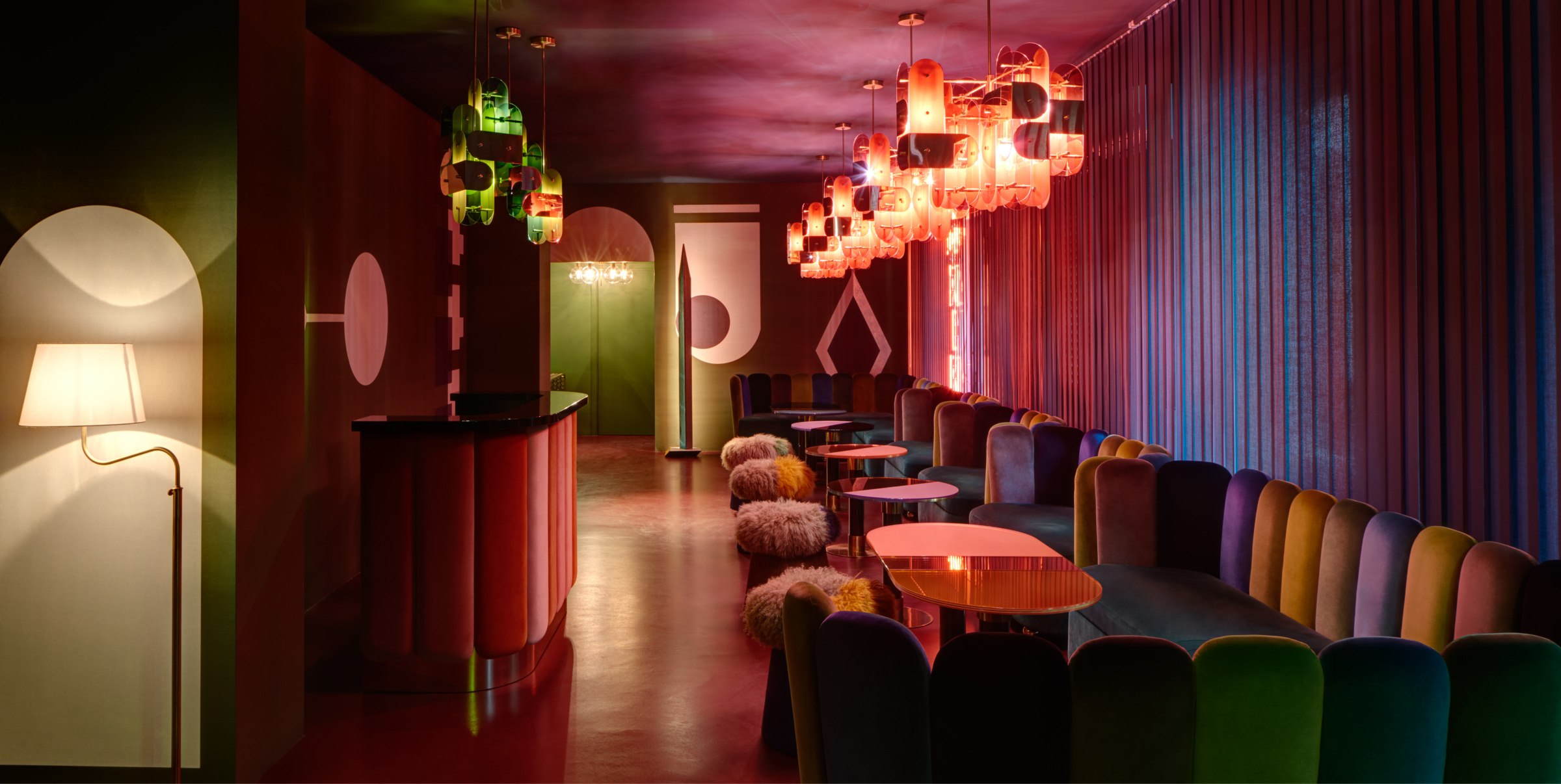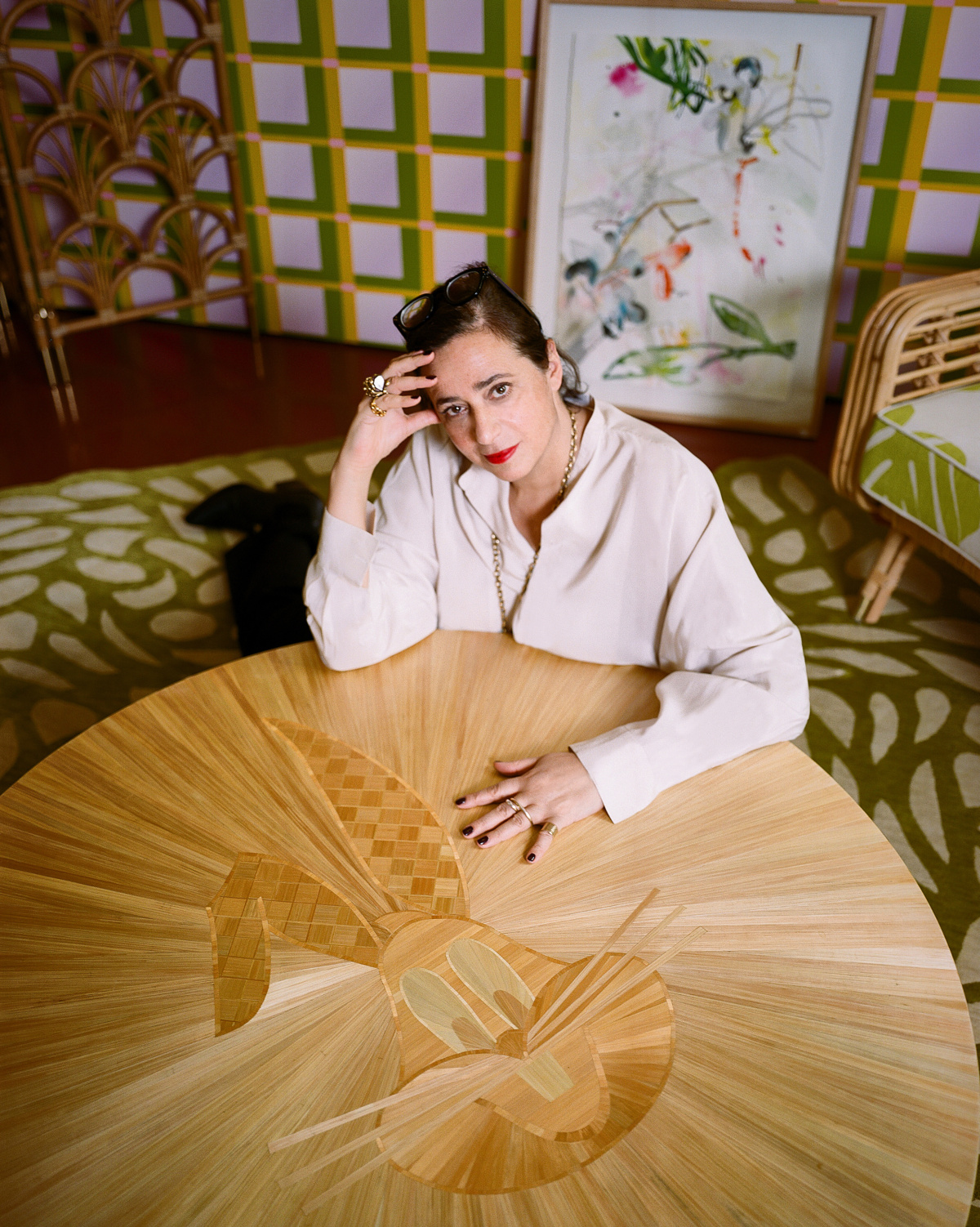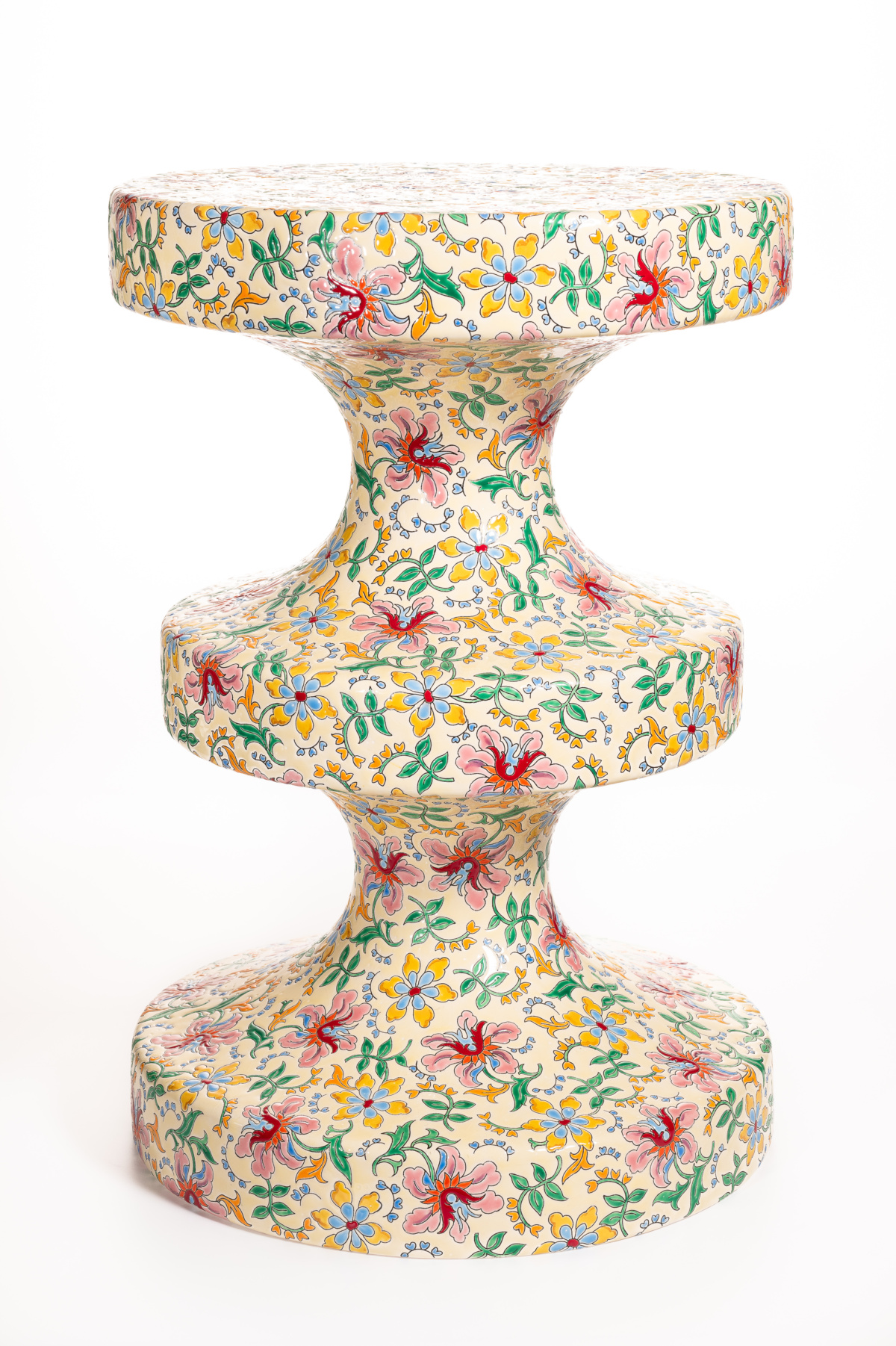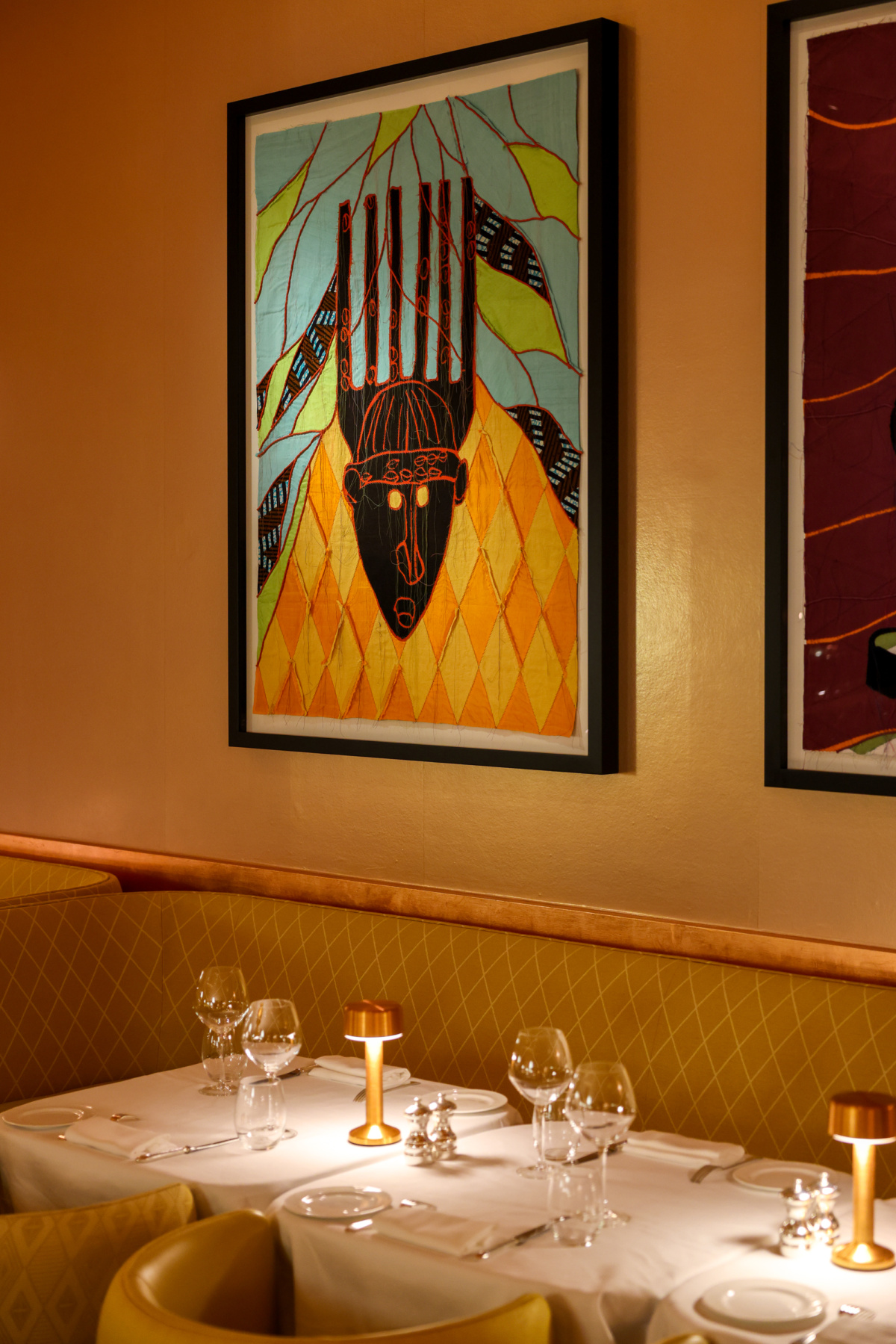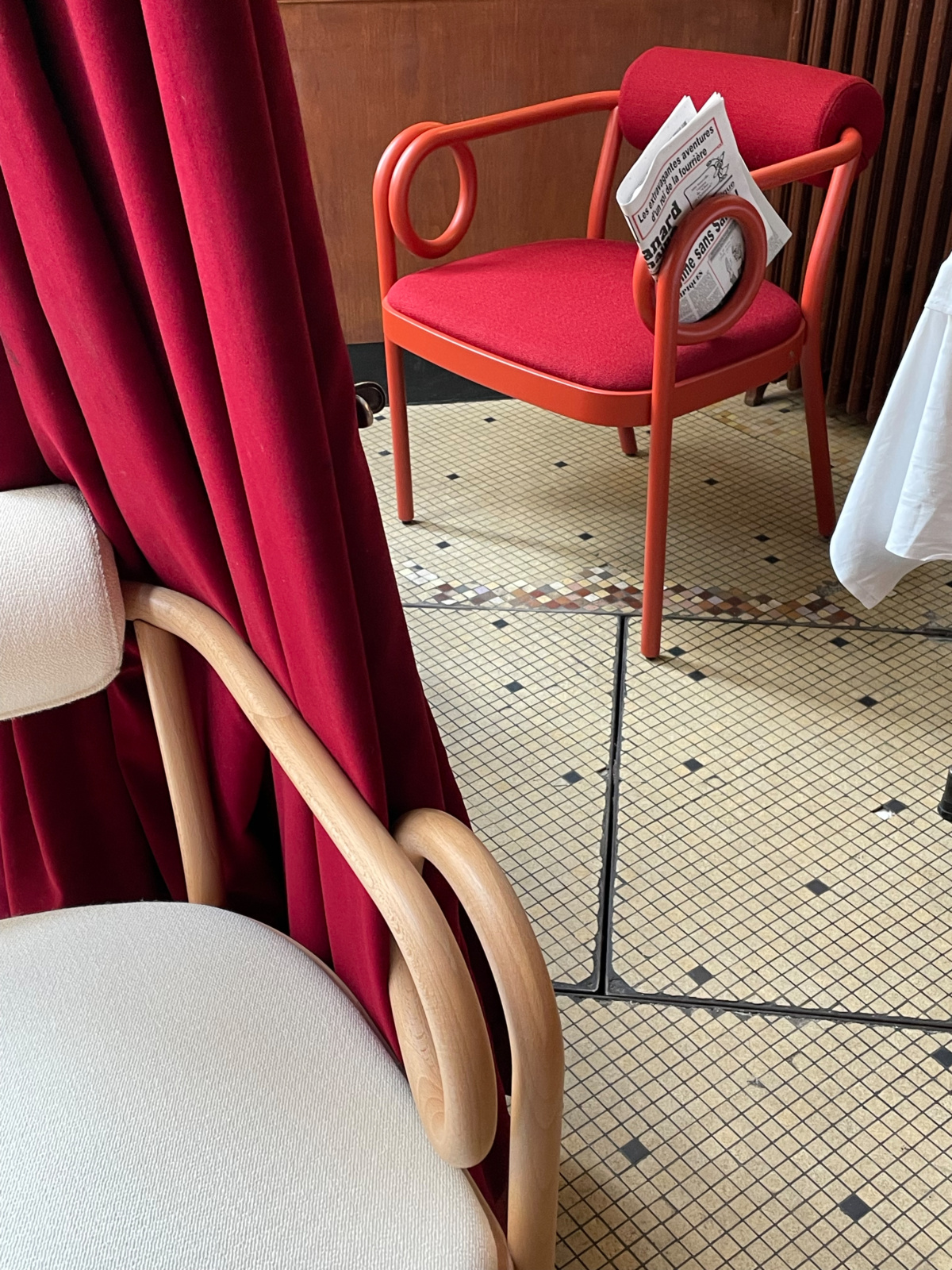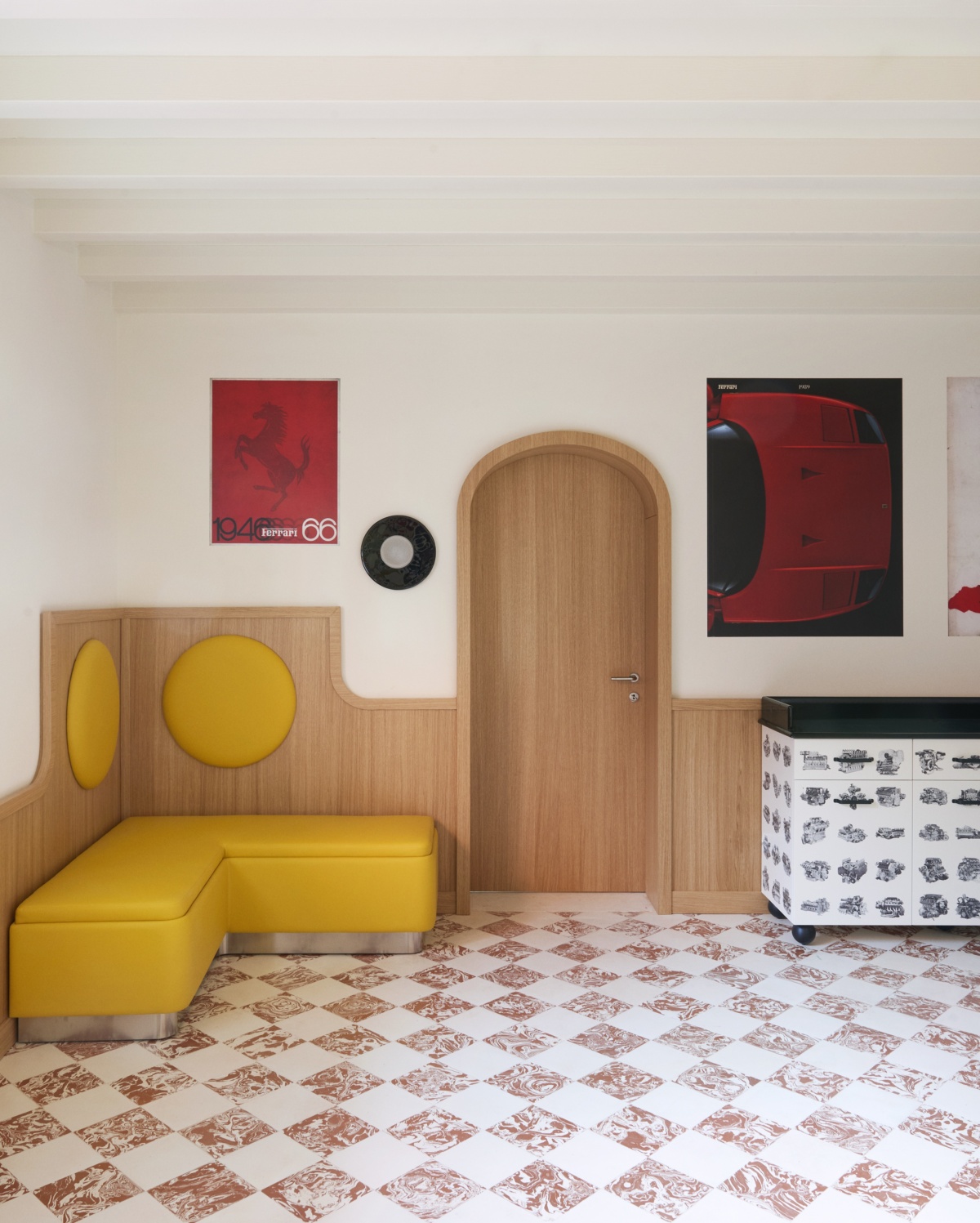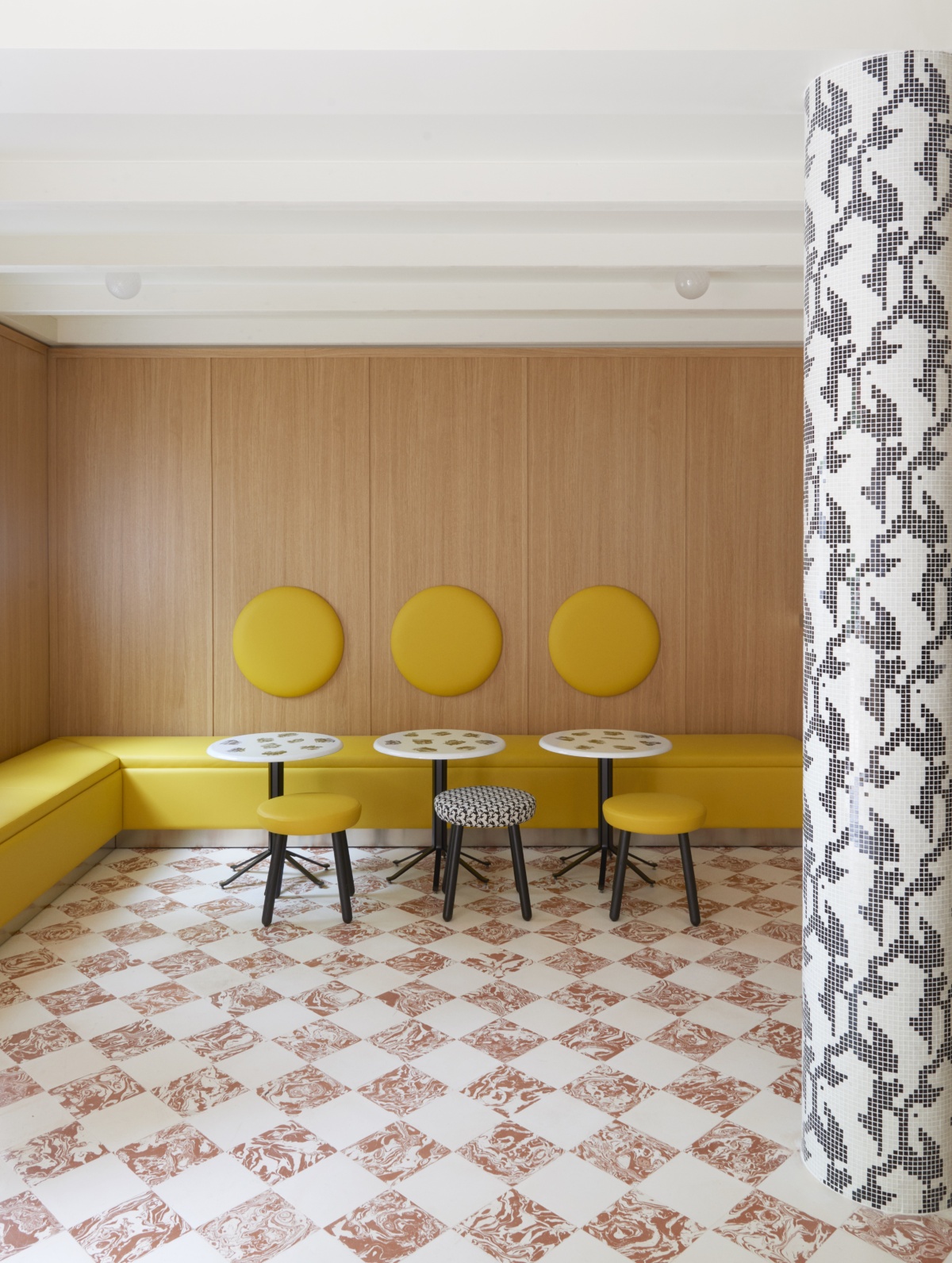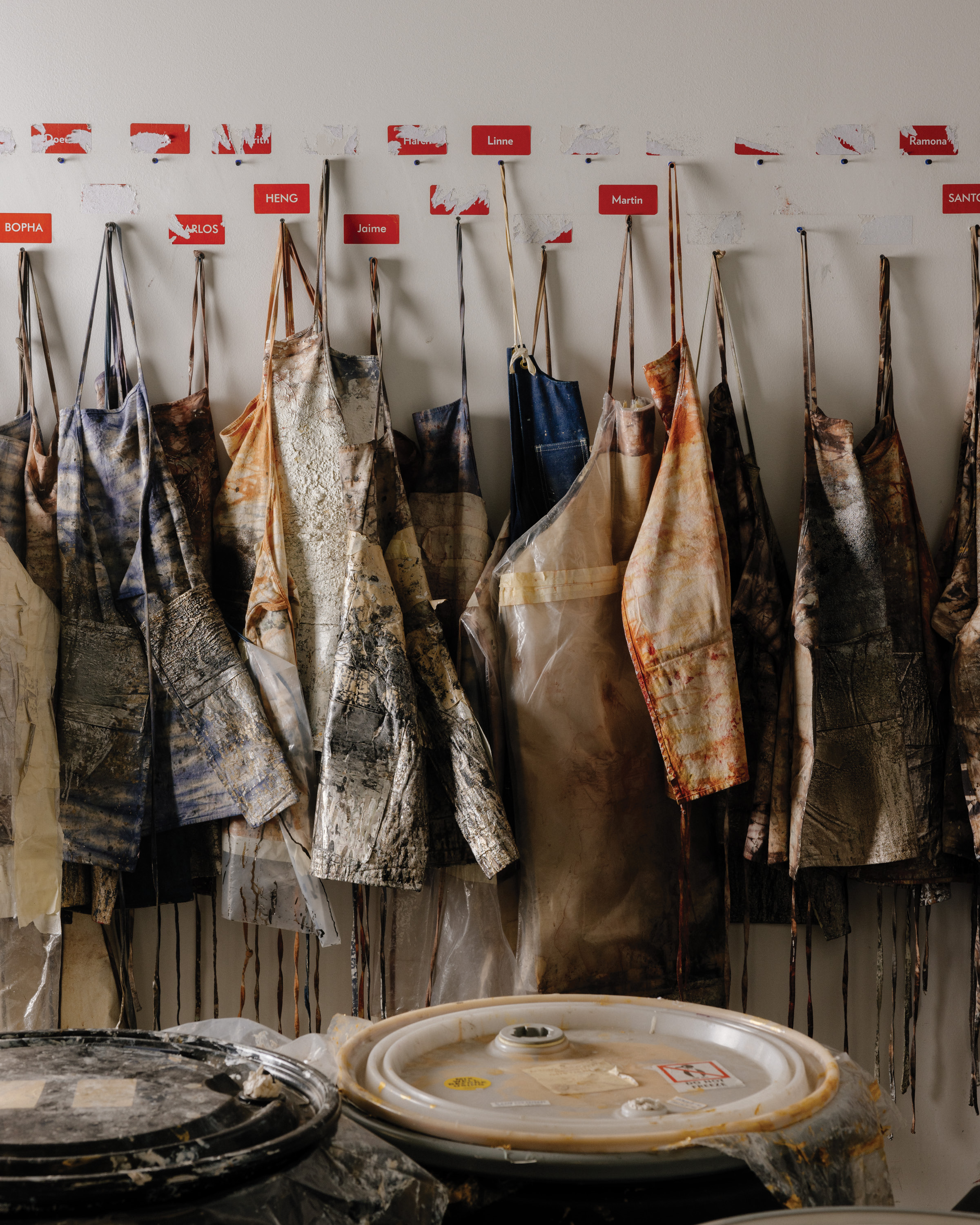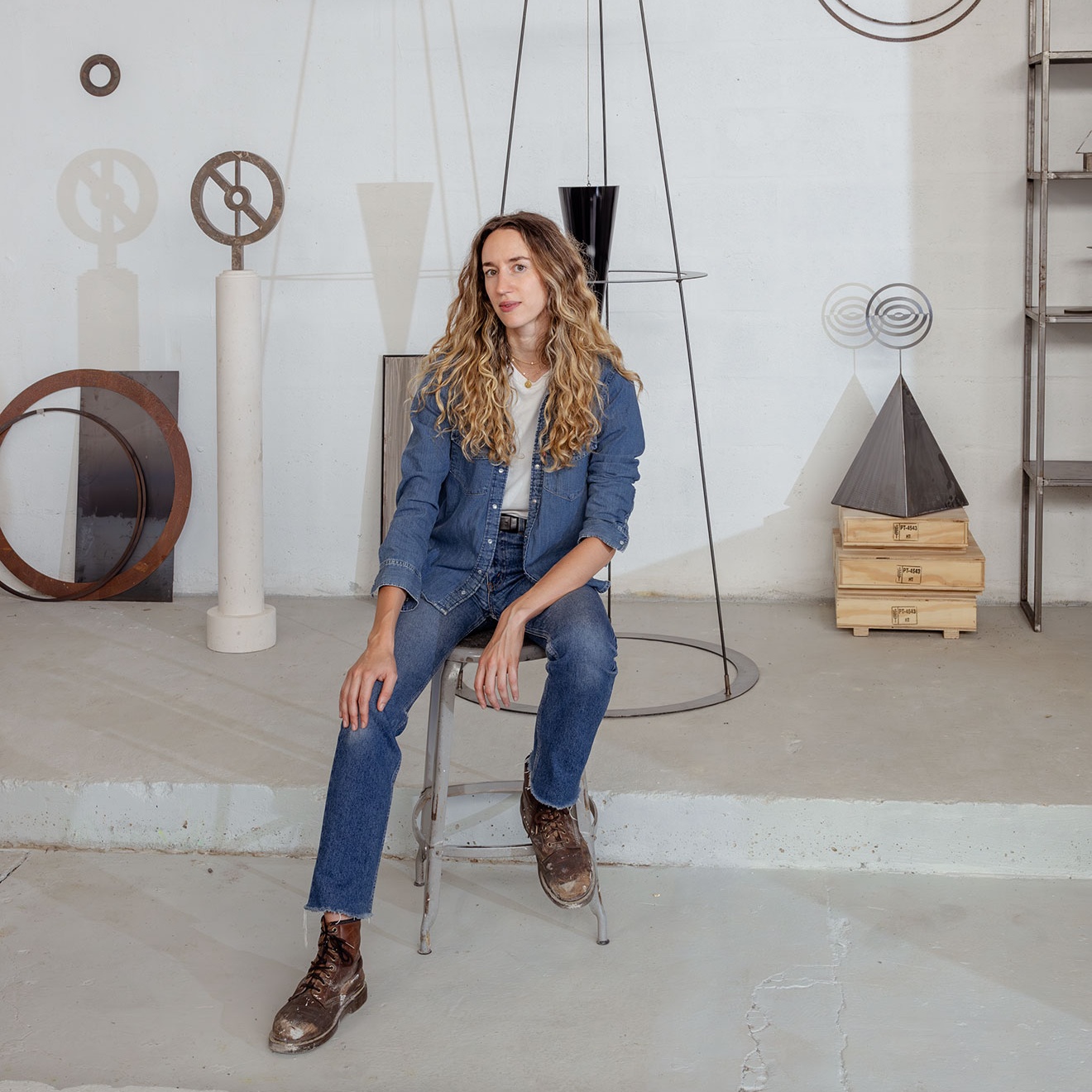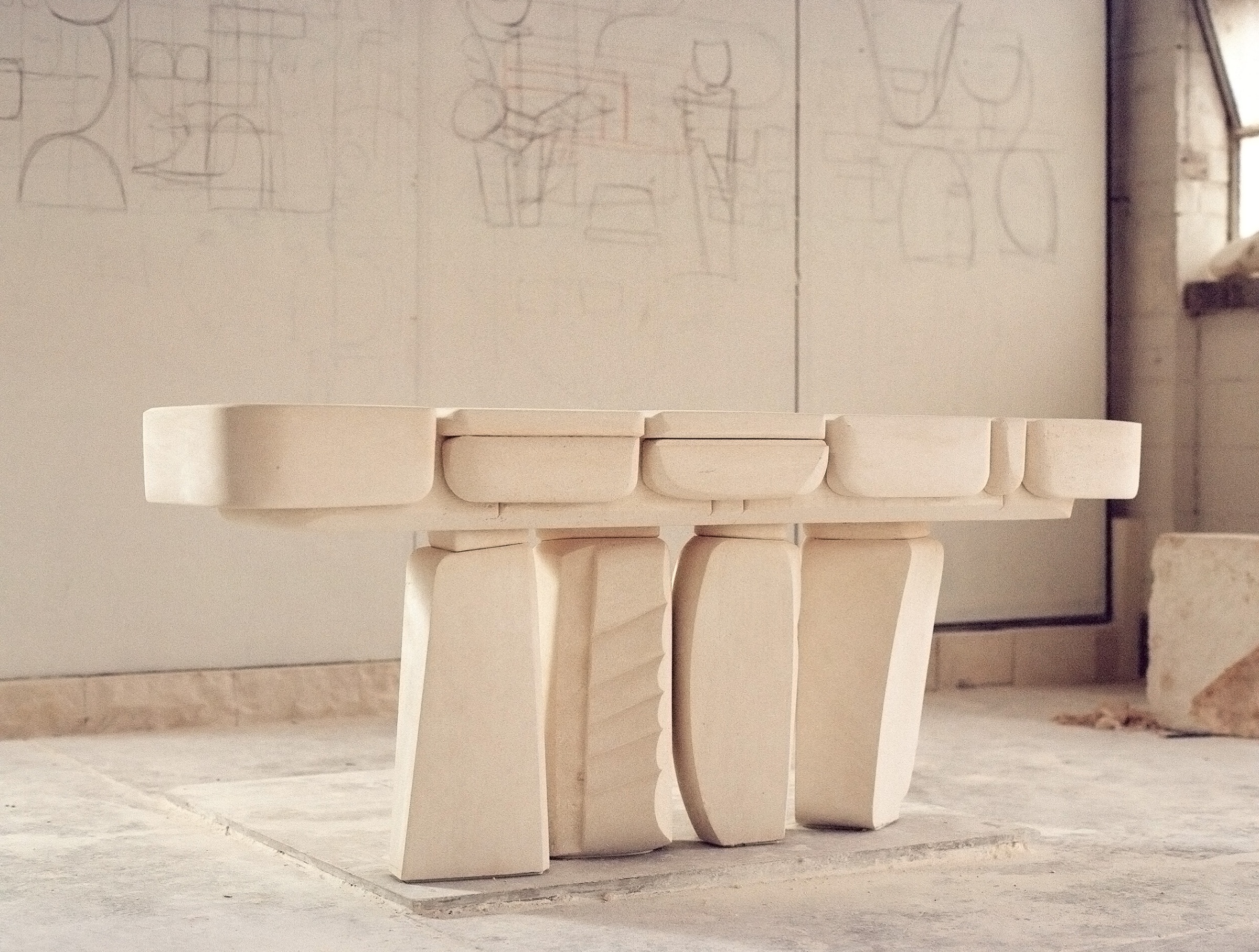Outside 3 rue las Cases in Paris, six men circle a massive marble tabletop, bracing themselves to carry it to the open door at the end of the street. India Mahdavi meets me in the doorway, overseeing the piece’s journey from her main showroom to the Project Room on rue de Bellechasse. It’s moving day—moving just a few dozen feet down the street, but when it’s Paris Design Week and the goods being transported are the marble masterpieces from India’s “Achromia” for Carwan Gallery, it’s a big deal.
Curious neighbors peek in to see what the fuss is about, clearly familiar with India and her work—and of course they are, as India has been a presence on the street for more than 20 years. Her showroom, boutique gallery “Little India,” and the Project Room are all within a few meters of each other; her studio is just upstairs, and her home is a few blocks away.
India calls the cluster of activity an ecosystem, intrinsically local. Not only do her neighbors know her, but her business is run as close to home as possible. “I’ve managed to become global, but from the beginning everything in my furniture line has been made as much as possible locally—I would say up to 80% by makers in France.”
- India Mahdavi founded her studio in 2000, when her son (who works with her in the studio today) was a baby. Photo by Alice Rosati
- The Bishop stools (shown here in Primadonna) were the first furniture pieces India showed in her space at 3 rue las Cases. Courtesy of India Mahdavi
The local production and distribution spawned naturally from India’s origins making furniture as supplements to her interiors. “Today you can find nearly anything you want, but 20 years ago, if I was looking for a sofa that was a bit oversized, it was easier for me to design it and make it than to try and find it on the market,” she says.
Thus in 1999, her iconic Bishop was born. Designed for APT bar in New York, Bishop began as a tall stool in turned wood. India created it to plant a forest of stools rather than a forest of legs at the counter. The outcome was intriguing, so she scaled Bishop down into a side table, made it in ceramic, and put it in the big front windows of her showroom. Bishop has since taken on innumerable colors and patterns, its shape becoming practically synonymous with India’s name and style.
India and I take a seat on the Bishop stools surrounding a big worktable in her upstairs studio. The sounds of the street below dance up through an open window as she shares an upcoming project, a special exhibition on modernist painter Pierre Bonnard for the National Gallery of Victoria in Melbourne. The wallpapers for the exhibition are enlarged elements pulled straight from Pierre’s paintings, showing India’s skill for amplifying the work of others through her own intuitive vibrance. Samples of the wallpapers adhere to her studio walls alongside other projects in motion.
“If you feel like time has stopped, then maybe you won’t feel the anxiety so much,” India says.
“I have this corridor where all my projects are hung because I don’t work with computers,” she says. Each morning she comes into the studio and goes up and down the corridor to check in on everything that’s in progress. “Suddenly I know what’s going on and I can see this is right, or this is wrong.”
Debuting as a splash of color among the Scandinavian design at Stockholm Design Week, India’s recent “Frankly Yours” exhibition with Svenskt Tenn gallery was inspired by architect and designer Josef Frank. India covered the gallery’s furniture and walls with one of Josef’s colorful floral patterns, Vegetable Tree. “I made it very immersive, so it kind of melts into one,” she says. “Everybody was so happy to be there because it’s like a hug.”
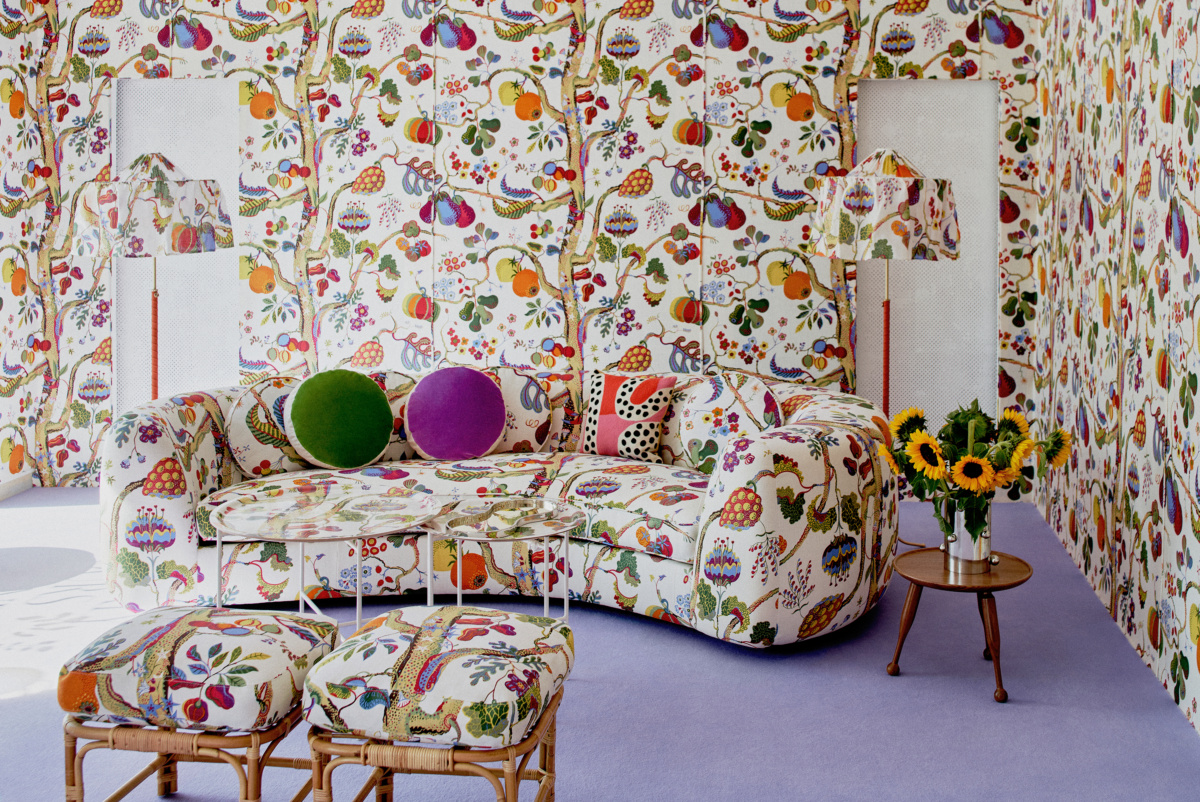
India Mahdavi says that the “Frankly Yours” (2022) installation at Svenskt Tenn felt like a breath of fresh air. Courtesy of India Mahdavi
Creating this optimistic embrace through design is a core motivation for India. Though she values simplicity and sustainable innovation, her design priorities for facing the future are motivated by generating hopefulness. In spaces full of colorful and textural references to different eras and cultures, she aims to soften our perception of the imminent “mass destruction of the world, if you want to call it that,” she says. “If you feel like time has stopped, then maybe you won’t feel the anxiety so much. The gallery in Stockholm had that feeling of nostalgia. It’s a moment outside of reality.”
India accomplishes these moments outside of reality through her logic and fearlessness when it comes to color. “Color for me is language, and it’s my expression.” She traces her intuition for color to technicolor memories of the abundance and bright cartoons of her childhood in America. She invites us into these vibrant memories with each design, creating immersive moments of playful wonder in completely mature spaces—just think of her famously pink takeover of the Gallery at Sketch.
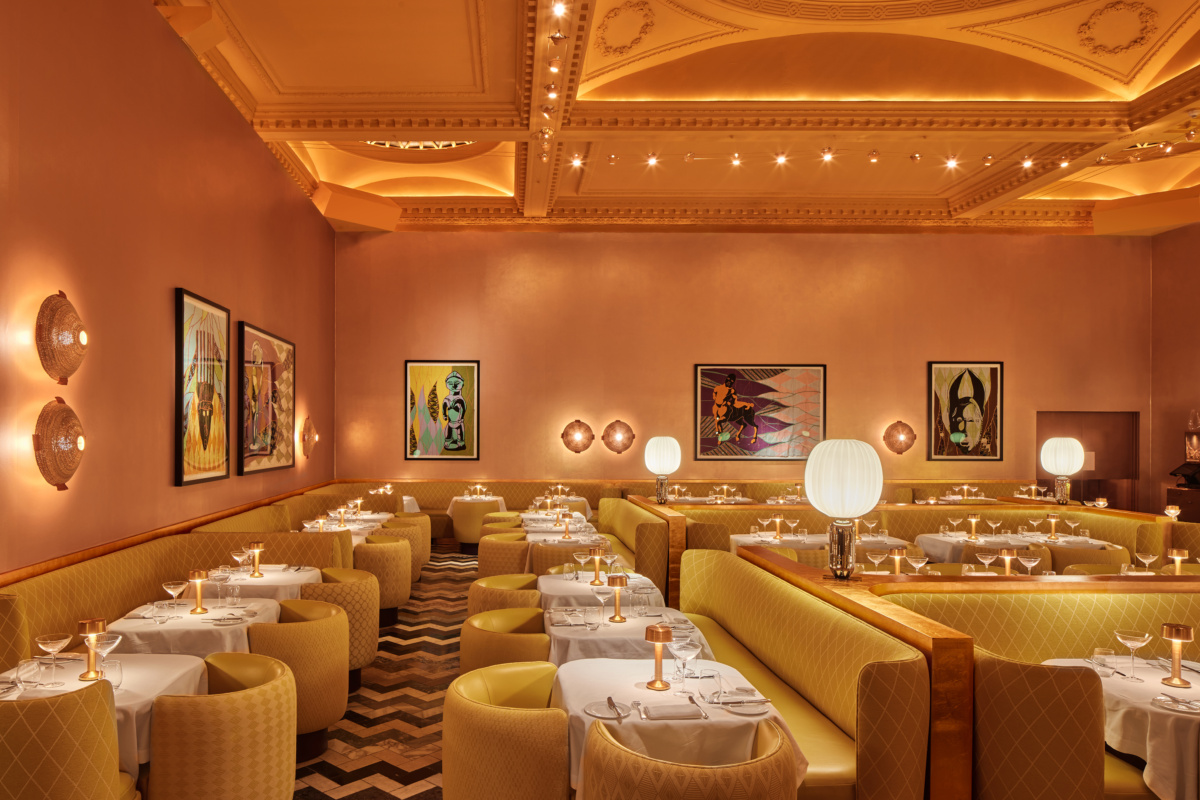
The Gallery at Sketch, 2022 redesign. India collaborated with craftspeople from Africa and artist Yinka Shonibare to replace the pink of “the most Instagrammed restaurant in the world” with a theme of warmth. Photo by Edmund Dabney
Of course, Sketch is pink no more. Earlier this year, India reworked the space along with British-Nigerian artist Yinka Shonibare, transforming Sketch with shades of gold and textures from Africa. Instead of being guided by color, India brought warmth to the space, allowing it to saturate the room from top to bottom.
At home India builds a different kind of escape through cultural dialogue in the Project Room, conceived for collaboration and exploration with multidisciplinary creatives from around the world. And in her own studio India’s furniture designs join inspiring objects that she has encountered and accumulated from all over the globe, each containing glimpses of different cultures and moments outside of the here and now.
“These objects, they become part of your own landscape of shapes and forms,” India says. Peering into her drawers of doodads feels like a sneak peek into India’s next portal-like design—to slip us into a different, more hopeful time and place.
- Yinka Shonibare’s artwork hangs above India’s designs at The Gallery at Sketch, 2022 redesign. Photo by Dave Benett
- India worked with Gebrüder Thonet Vienna on the Loop Collection, 2022, which debuted at Little India during Paris Design Week. Courtesy of India Mahdavi
- Classic Ferrari colors ground India’s design of “Cavallino Maranello” for the storied automotive brand. Photo by Danila Scarpati
- “Cavallino Maranello.” Photo by Danila Scarpati
A version of this article originally appeared in Sixtysix Issue 09 with the headline “India Mahdavi.” Subscribe today.
